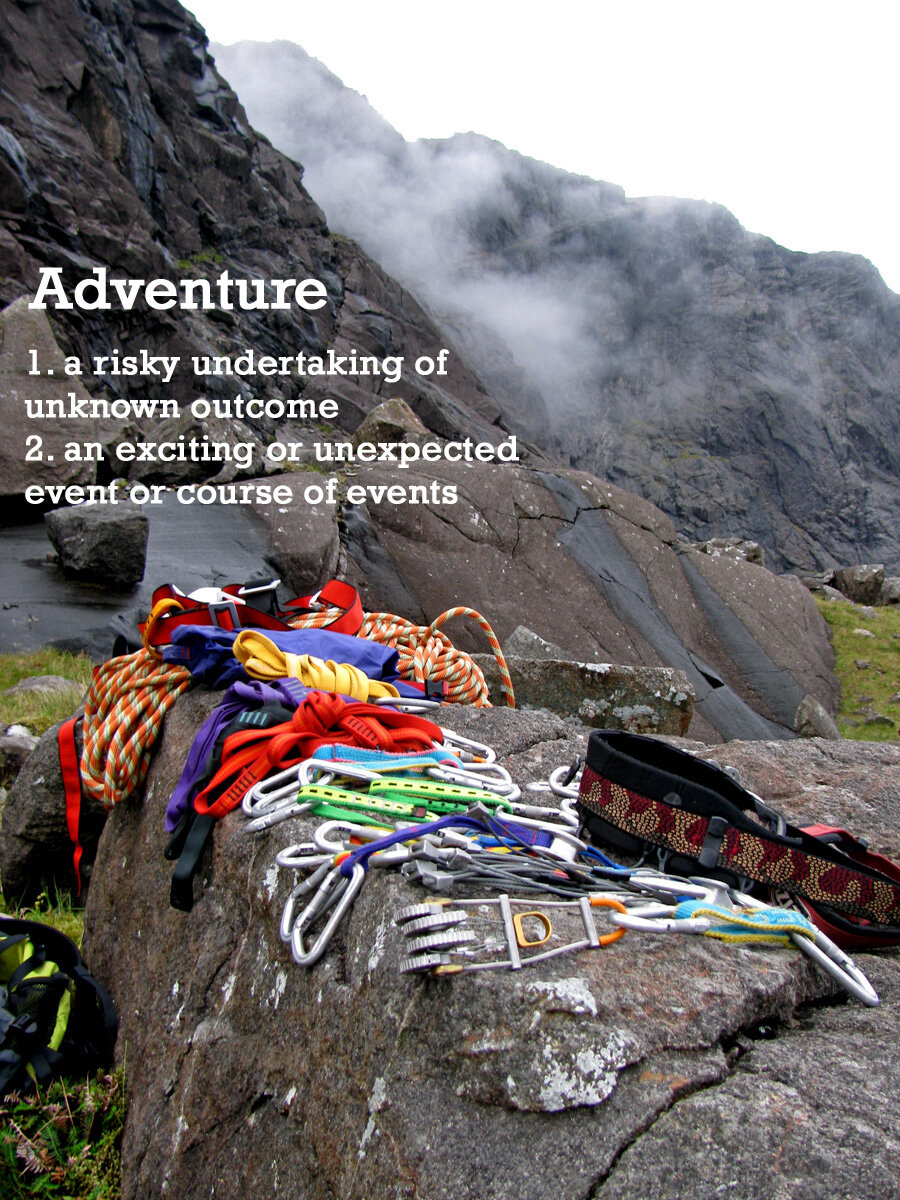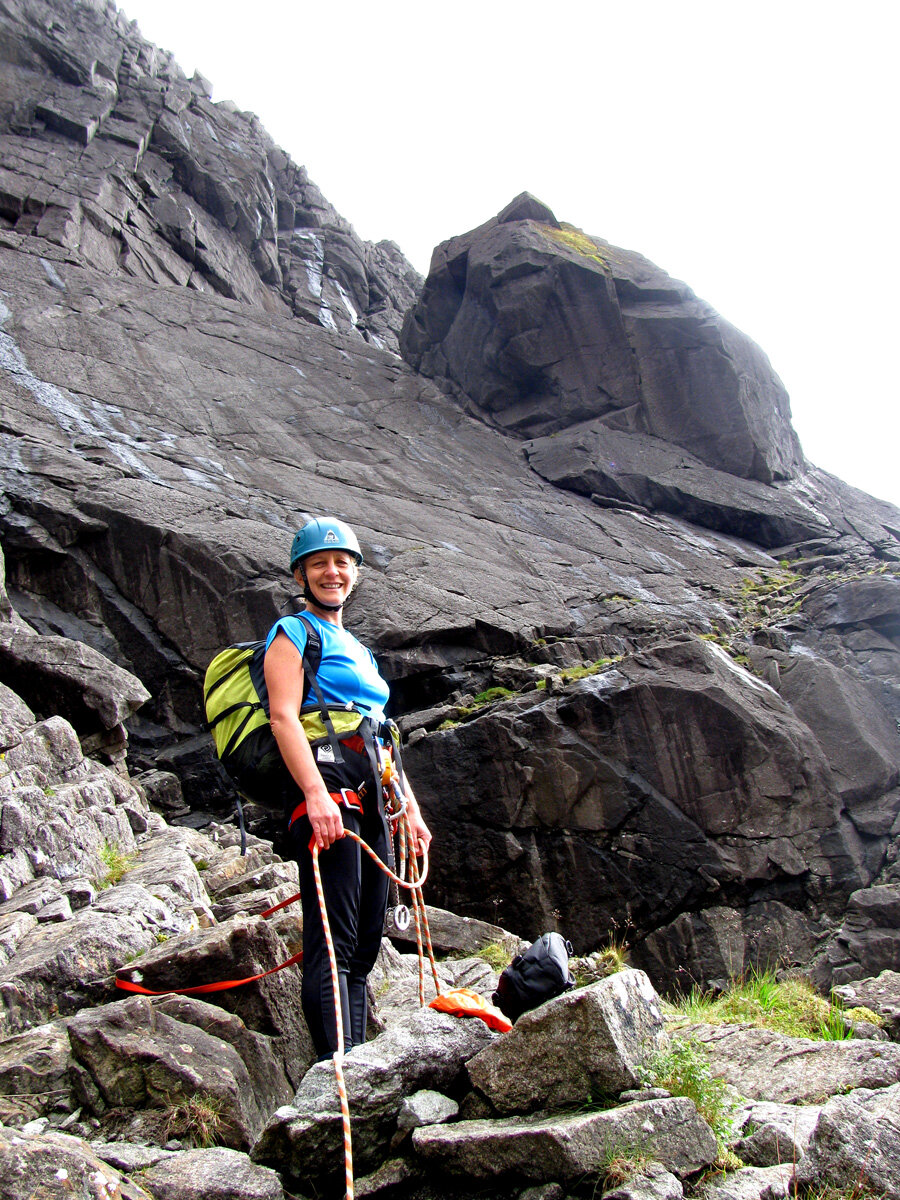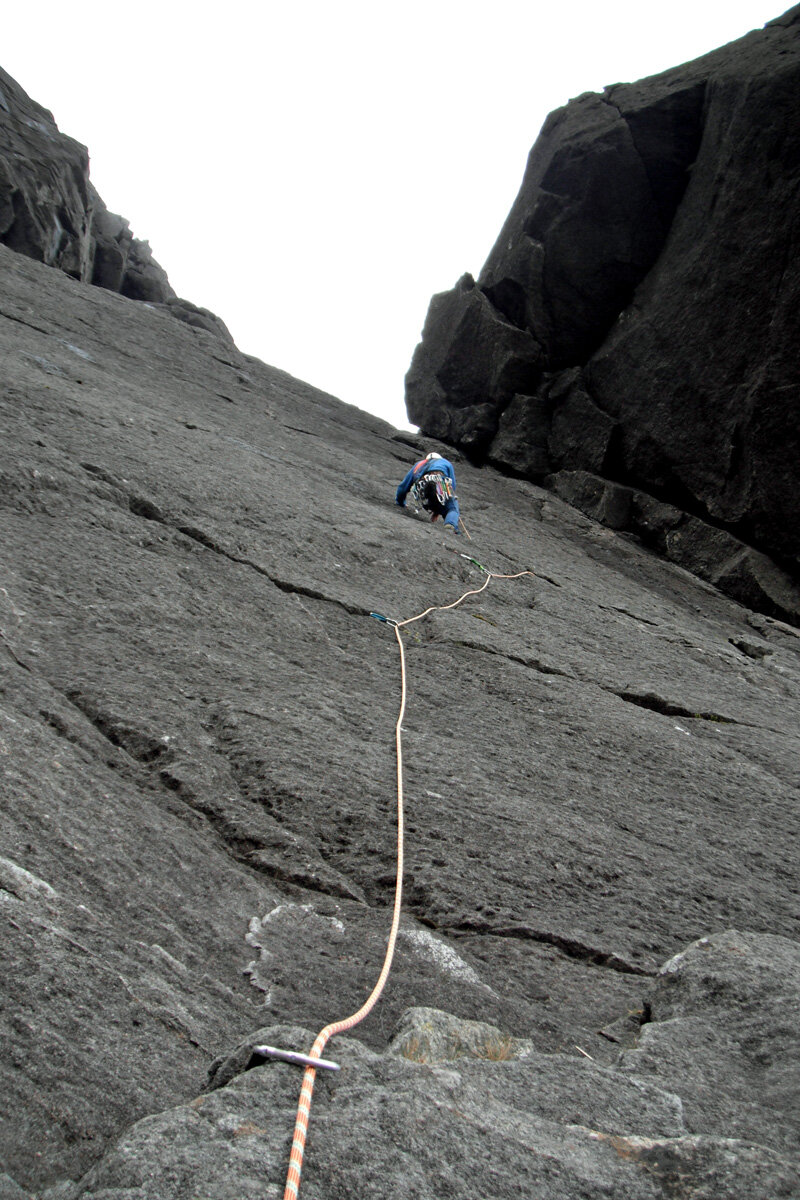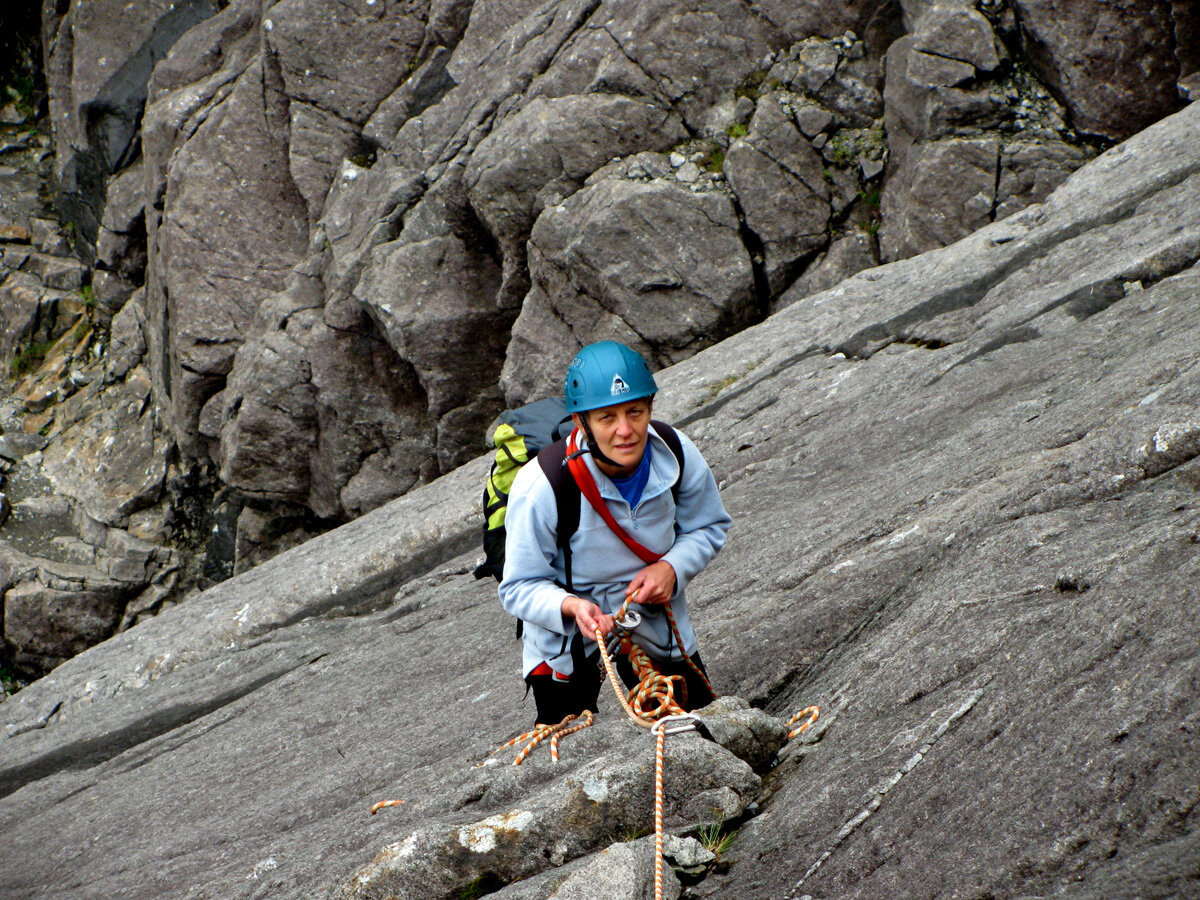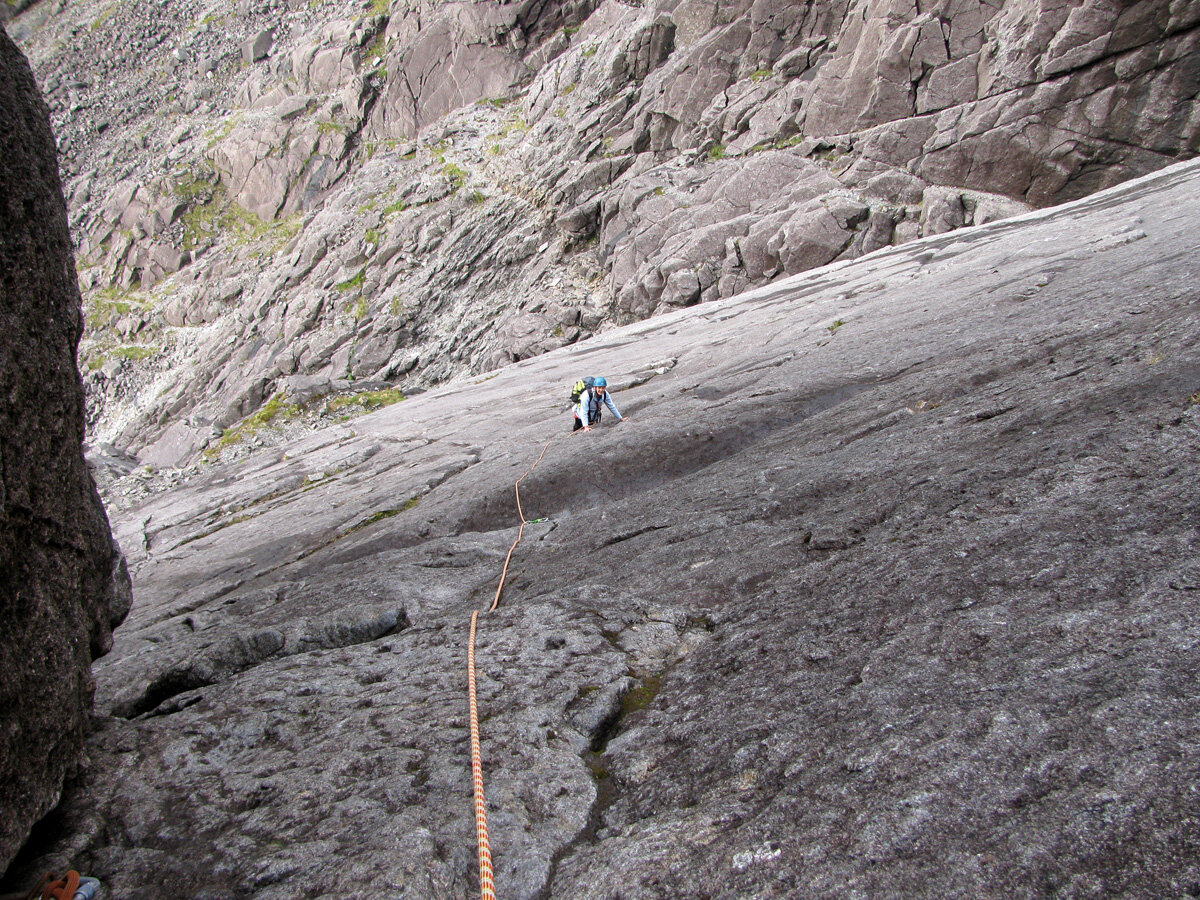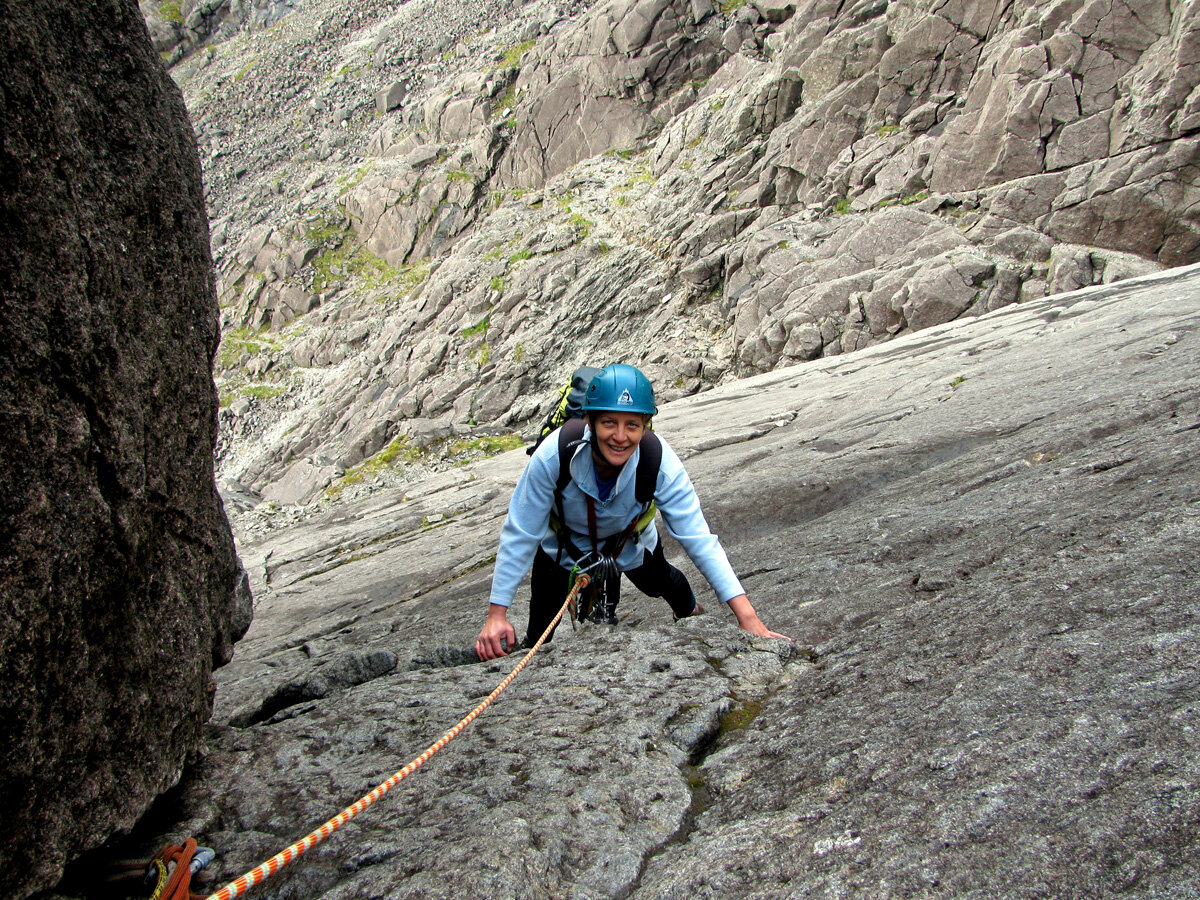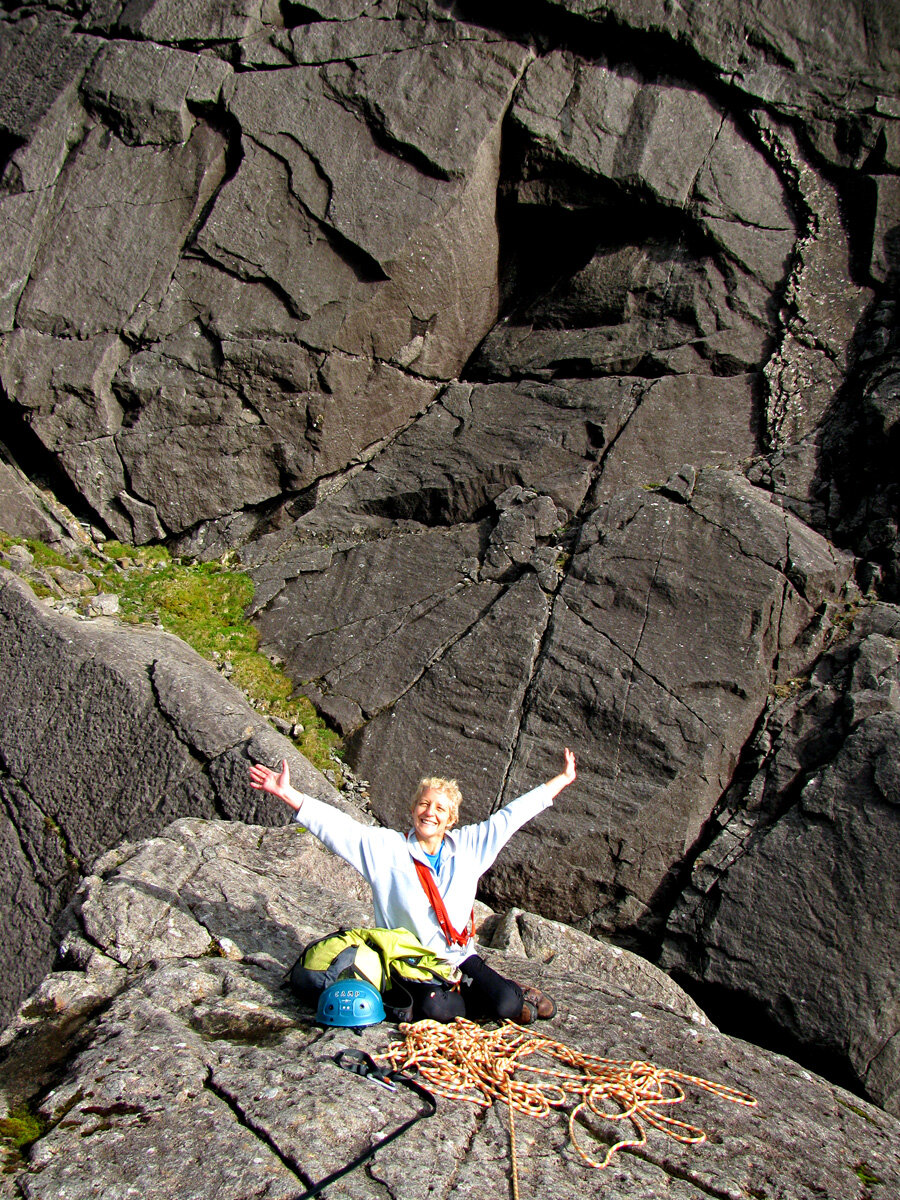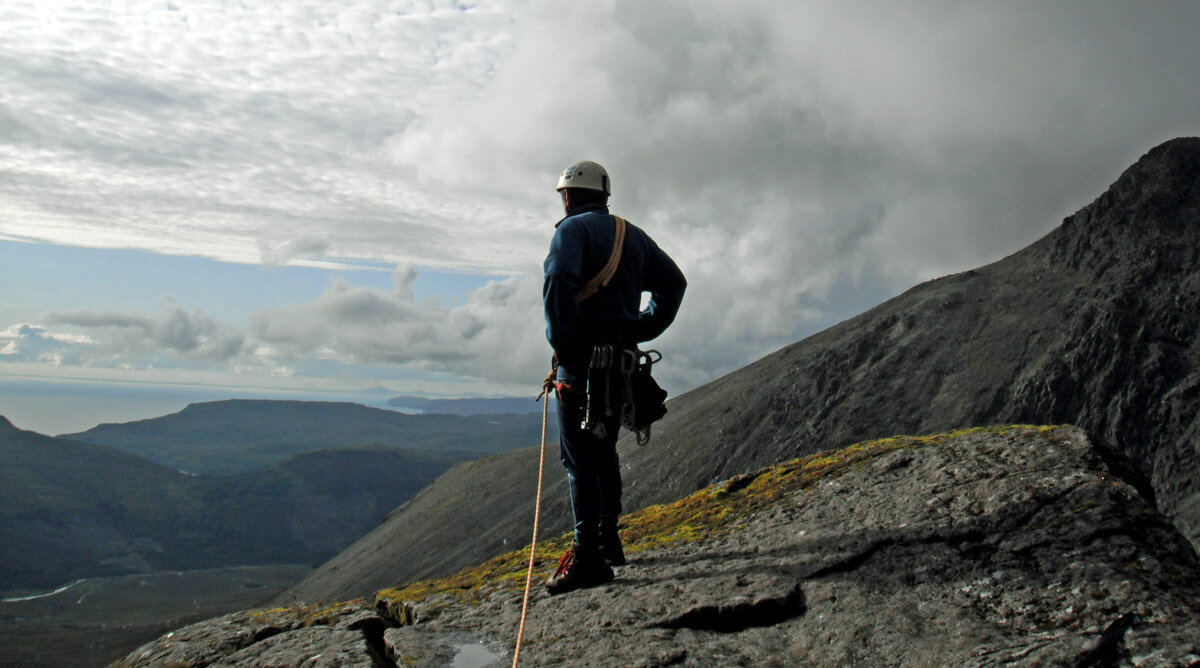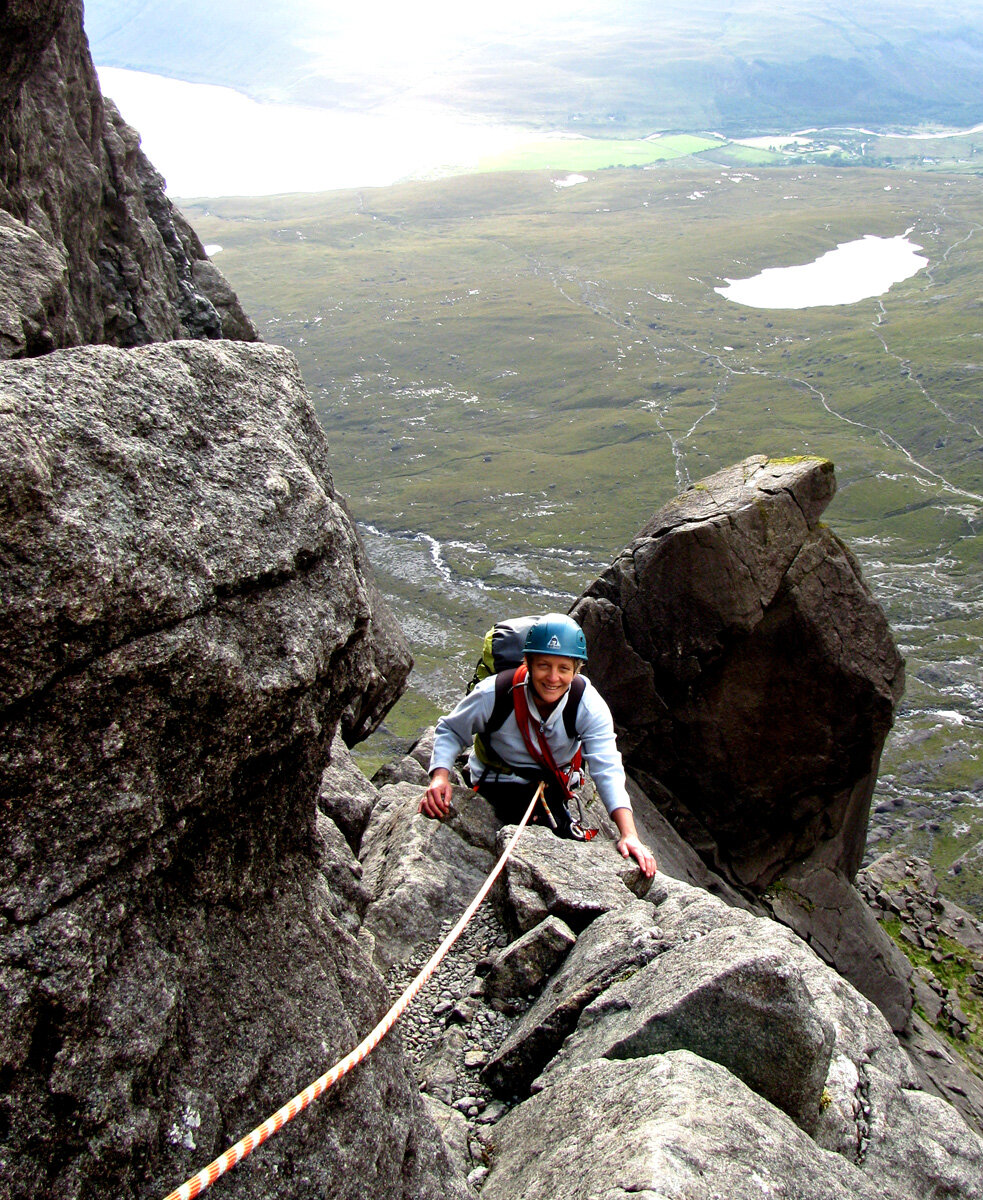One task I had to achieve was my laundry. There was a washing machine at the lifeboat station, and I made full use of this facility, hanging my freshly washed clothes to hang in the blustery sunshine on a rudimentary clothes-line I had created from my tow-line. I laughed to myself as I hung my clothes over the rope in a haphazard manner, thinking of my wife who never allows me to hang out the washing. According to her I never do it properly! There’s not much to do in the hamlet of Aith, so I spent my day off kicking back in the crew room and gazing out of the picture window at the magnificent view up the Voe. I worked out I had four days of paddling ahead of me to complete the circumnavigation of mainland Shetland to reach Lerwick. The forecast was mixed with strong winds promised for much of the time. There were a couple of exposed sections of coastline to contend with, particularly Esha Ness with a reputation for rough seas and few places to hide. For the briefest of moments, I pondered portaging from the west side of mainland Shetland to the eastern side into Sullom Voe over the curiously named Mavis Grind, a neck of land which separated the west seas from the east. Mavis Grind it turned out when I asked Hylton, wasn’t a 1950s dance but a derivation from Old Norse meaning gate of the narrow isthmus. The isthmus, under thirty-five metres wide at its narrowest section, is the land link between the Northmavine Peninsula and mainland Shetland. Even though portaging here would considerably reduce my journey to Lerwick, I wanted to enjoy the achievement of kayaking around the whole of the island.
In hindsight, as Hylton (the lifeboat Coxswain) suggested, I ought to have stayed at Aith another two days, because shortly after setting off I found myself struggling into the teeth of a minor gale. The winds were from the north west from the direction I was heading. I paddled slowly out of Aith Voe, one laboured paddle stroke after another, realising I was exiting a natural and excruciatingly long wind tunnel. I cursed my stubbornness in insisting I would press on, no matter what. As I struggled to gain forward momentum, my conscience niggled with criticisms of my impetuousness. I mouthed silent thanks I had left Aith too early in the morning for folks to spot me struggling away up the voe.
Eventually I passed Papa Little island and crossed to the island of Muckle Roe. Along the shore here I was out of the worst of the wind and I caught up with myself a little, this easing my bad temper. Despite the wind, the day was gloriously sunny, the sea glittering with thousands of dancing diamonds. I looked up at the Scandinavian influenced farmsteads and dwellings and felt again the exoticness of being somewhere wonderfully foreign. I turned from Busta Voe, a name which made me smile because it sounded like a 1980s Ska singer, under the bridge linking Muckle Roe to the mainland, and into Roe Sound. Ahead of me through the narrow stretch of water was the expansive St Magnus Bay across which, nine miles away, was the headland of Eshaness. The wind was blasting down Roe Sound and once again I found myself digging my paddle blades deeply hard with a sweat inducing effort to make headway.
I was less than a mile from Turvalds Head (who was Turvald I wondered?) This was the point where I faced a choice to turn eastwards for Mavis Grind and the short portage into what assuredly would be the easier seas of Sullom Voe or press onwards towards the Eshaness headland. Choosing the Mavis Grind route would ensure the wind would be gratifyingly behind me whilst I paddled the remainder of the route to Lerwick. As I reached forward over another choppy wave and pulled hard, this choice was an attractive insight. I was sorely tempted by the prospect of easier paddling. I was half an hour away from having to make my decision.
The forecast assured me the strong north westerly winds would persist for at least two days, possibly three. I would struggle against them if I continued up the west coast of Shetland. The seas off Eshaness would be nasty and recalling my fearful experience along the west coast of Orkney, I didn’t want to face those conditions again. It seemed to me wisdom should prevail and with a heavy heart I was close to acceding to the inevitable. The glitter went from the day despite the diamonds continuing to dance about me. Despite the prospect of encountering easier conditions in Sullom Voe, my disappointment was palpable. My heart was set on completing a circumnavigation of Shetland mainland. It seemed to me my journey was in danger of unravelling. I was losing purpose. My original somewhat ambitious plans for my adventure, had included paddling right up to Muckle Flugga, the most northerly piece of land in the British Isles. In the cosy comfort of the small saloon aboard our yacht, and with the alluring aid of Google Earth, I had glibly drawn a route to this most northern point without much thought for the reality of the weather conditions I now faced in a rather bleak Roe Sound. As ever with a decision such as this, there were variables to consider, each validly presented. My task now was to sort through these in a logical fashion to arrive at an eventual choice.
The natural realm, the great outdoors as we often like to call it, tests me in many ways. From the dawn of time, humans have pitted themselves against the elements. I would imagine for hunter gatherer peoples, the natural environment was their world, the milieu where they lived, thrived, and coexisted with wild beasts in this mutually shared space. I could not imagine they sought to climb a mountain simply because it was there or paddling a log boat along the coast because they saw this purely as a personal challenge. I imagined for them, life held primary purposes; gathering food, finding shelter, and protecting their children. The essentials of life. As humans moved away from a transient lifestyle to one of settlement and permanent shelter, our aspirations through the millennia shifted and altered to the point here I was, a modern human, sitting in my kayak, on a wind whipped Shetland sea, enjoying the luxury of fulfilling a personal aspiration to kayak around Scotland. If there was no life sustaining purpose to me being here, what did this moment serve me? What did it matter if I chose to cross Mavis Grind and curtail my circumnavigation of Shetland, instead of pushing further westwards to realise my aspiration for a Shetland circumnavigation?
I discovered the answer was this; the personal purpose of my adventure was indeed life sustaining. It was offering me an important opportunity for growth and development. Physis is a Greek word which describes an innate natural force within every living entity which drives us to grow. In humans, physis refers to the energy invested in health and the expansion of our personal horizons. This is the urge to do something different, the aspiration to be who we want to be, and to choose our destiny. Good mental health is not only the outcome of sound relationships but also the fulfilment of essential universal drives within us including belonging, self-fulfilment and survival.
Physis involves change. No living thing can avoid change, we are constantly in the process of evolution. However, because we crave equilibrium, continuity, and safety in our lives, change is often difficult to accept. We hold onto what we know because this provides us with certainty. This desire for stability is called homeostasis, the opposite to physis. Humans are therefore pulled by these two opposing forces, homeostasis and physis. It is this unresolved struggle which underpins many of the unhappy responses we have to our life choices.
My struggle with clinical depression is most likely an outcome of this tussle within me, which is why, suddenly, the decision to complete the circumnavigation of mainland Shetland or cut it short, had become a vitally important one for me to resolve. It wasn’t simply a matter of portaging into Sullom Voe to avoid the winds. It was about the importance I placed on facing, or not facing, the challenge the strong winds presented. Homeostasis determined I would seek the less demanding route, to ensure I maintained my schedule and avoided the probability of serious and demanding sea conditions. Physis on the other hand, invited me to push on, even though success was uncertain and there was a high probability of becoming storm bound with inevitable delays. As so often when faced with this process, it is conducted beyond my consciousness. What I am aware of though, is rationalising the presenting facts of the issue and ascertaining the consequences if these are ignored or considered. The underpinning factor is personal safety, so an indication the task being considered was completely reckless, would determine an immediate avoidance. If though, the risks were such harm may occur but with care, could be avoided, then the task was worthy of consideration.
It would be simple to avoid the complexities within the decision-making process, to not heed them or desire self-understanding. For me though, this would diminish the opportunity for self-awareness. I consider this to be integral to an adventure experience. Without understanding, there is no wisdom to be gained. It was clear from the outset that my journey around Scotland was so much more than simply visiting the lifeboat stations. It was an opportunity for me to gain deeper insights into my ‘self’. This would help me grow into the older man I hoped to become. I didn’t want to slide into my old age. I wanted to arrive with as much energy and enthusiasm for life as I had when I was in my twenties.


